Honky Tonk (1941)
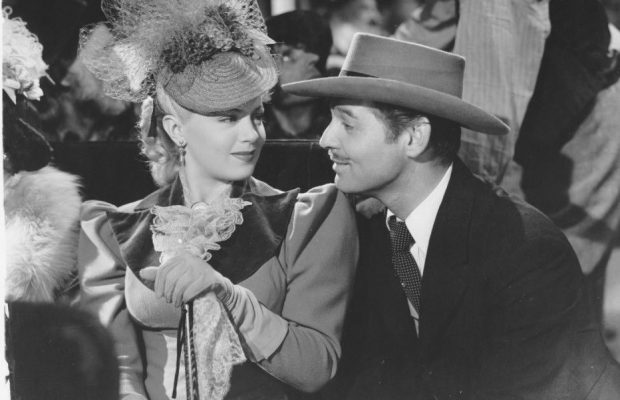
Toronto Film Society presented Honky Tonk (1941) on Sunday, September 28, 1986 in a double bill with Destry Rides Again as part of the Season 39 Sunday Afternoon Film Buffs Series “A”, Programme 1.
Production Company: MGM. Producer: Pandro S. Berman. Director: Jack Conway. Screenplay: Marguerite Roberts and John Sanford. Music: Franz Waxman. Songs by Jack Yellen and Milton Ager. Art Director: Cedric Gibbons. Sound: Douglas Shearer. Cinematography: Harold Rossen. Editor: Blance Sewell.
Cast: Clark Gable (Candy Johnson), Lana Turner (Elizabeth Cotton), Frank Morgan (Judge Cotton), Claire Trevor (Gold Dust Nelson), Marjorie Main (Reverend Mrs. Varner), Albert Dekker (Brazos Hearn), Chill Wills (The Sniper), Henry O’Neill (Daniel Wells), John Maxwell (Kendall), Morgan Wallace (Adams), Douglas Wood (Governor Wilson), Betty Blythe (Mrs. Wilson), Hooper Atchley (Senator Ford), Harry Worth (Harry Gates), Veda Ann Borg (Pearl), Dorothy Granger (Saloon Girl), Cy Kendall (Man with Tar), Ray Teal (Poker Player), Esther Muir (Blonde on Train), Francis X. Bushman, Jr., Art Miles (Dealers), Syd Saylor, Harry Semels, Frank Mills, Art Belasco, Eddie Gribbon, Ralph Peters (Pallbearers), Eddy C. Waller (Train Conductor), Will Wright, Alan Bridge, Lee Phelps (Men in Meeting House), Horace Murphy (Butler).
If any studio could turn out a glossy Western it was MGM in the forties. Honky Tonk, which was the first starring vehicle of the new love team of Clark Gable and Lana Turner, proved to be a big box-office hit, with Gable’s character largely modelled on his popular role as Rhett Butler and no expense spared in the production.
From the point of view of plot there was certainly nothing unique about this film. The New York Times noted: “It is distinctly in the tradition of Gable pictures–you know, the sort in which he slugs it out, toe to toe, with equally impetuous women.” Gable plays a slick con artist who arrives in the town of Yellow Creek, Nevada. After giving up his dance-hall girl mistress (Trevor), he weds former Bostonian Lucy Cotton (Lana Turner). His reformed appearance is only a front, however, for continued evil-doing in which his new wife’s father aids and abets him. Gable’s conversion is ultimately brought about but not before he has had a chance to batter down Lana Turner’s bedroom door in true Rhett Butler style and not before her character suffers a miscarriage that recalls Scarlett’s in Gone With the Wind. Honky Tonk, like the earlier film, contained a good dose of melodrama–indeed, according to at least one critic, it is “really a soap opera set in a Western locale.”
Clark Gable and Lana Turner were to be paired together in three more films as “the team that generates steam!” Somewhere I’ll Find You (1942) was marred by the tragic death of Gable’s wife Carole Lombard in the middle of filming–Homecoming (1948) and Betrayed (1954) were fairly undistinguished efforts, so that Honky Tonk is probably the four films they made together. Honky Tonk also boasts the finest supporting cast of the four films, including Claire Trevor in a repeat of her Stagecoach role as the whore-with-a-heart-of-gold.
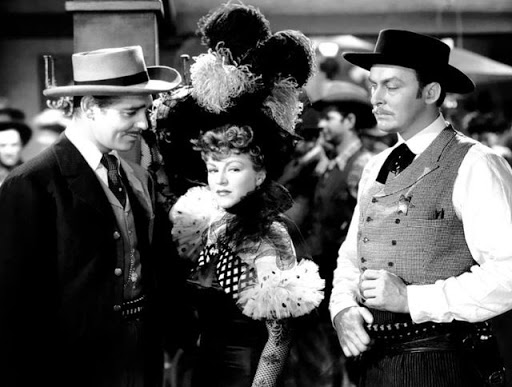
Jack Conway, the film’s director, has been dismissed by Andrew Sarris as “submerged in the Metro studio system.” As Pierre Sauvage writes, however, more generously: “To skim through Conway’s credits is to relive a whole chunk of Hollywood history, chockablock with legendary names such as Jean Harlow, Clark Gable, Wallace Beery, coasting on a studio system and style in full flower. At its best, this style offered sharp dialogue, an infectious zest, an exuberant sense of adventure, and an attractive star lineup that would often make up for the overworked story lines and the phony sets….It is at times enjoyable simply to observe the mechanical perfection of a style in which each retort is neatly in place, every minor character cast and characterized according to seemingly immutable rules, and each sequence minutely timed….When the material is good, and well-handled, who needs an auteur?” Certainly Conway’s strength always lay in fast-paced, uncomplicated action films.
Honky Tonk was released in October of 1941, just three months before Pearl Harbour swept America into the war she had sought to avoid. It must have provided audiences with a welcome relief from the tension of the times but the New York Times critic was harder to please than most. He noted that “this story of a gambling hall sharpster and his snarled romance with a virtuous young lady is enveloped in a faint aroma of mothballs. The dead hand of Cimarron and a dozen subsequent frontier extravaganzas lies heavy upon it.” His criticism becomes more understandable when one considers the quality of the other films released in New York in that same week–they included Leisen’s Hold Back the Dawn, Deanna Durbin in It Started With Eve, and John Huston’s classic The Maltese Falcon. Modern day filmgoers would love to have as much to choose from!
One final note: originally, the film was to have been a fictional account of the saga of Soapy Smith, a real-life, colorful frontier sharper and boom town dictator, but his descendants demanded too much money from MGM, so Marguerite Roberts and John Sanford set to work to conceive their own version.
Notes by Laurie McNeice

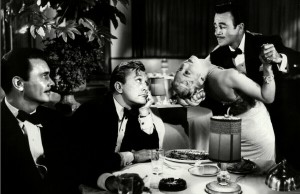
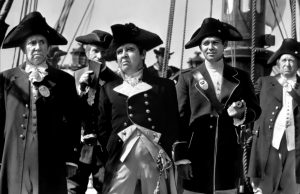
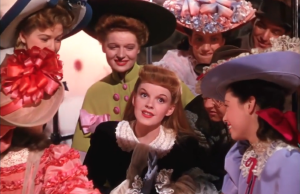






Leave a Reply